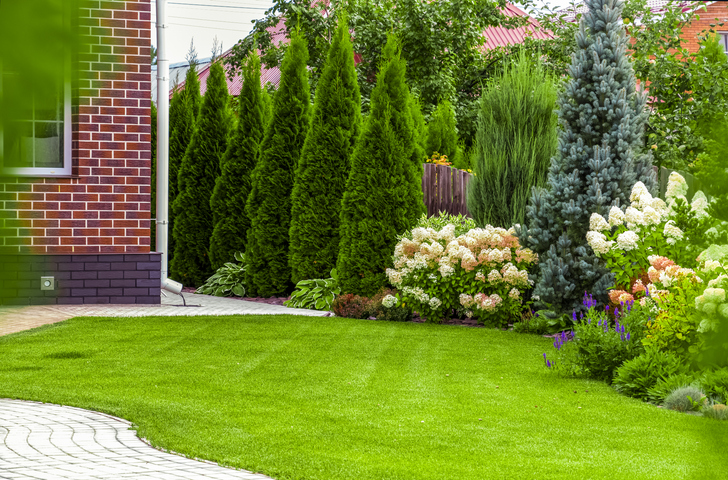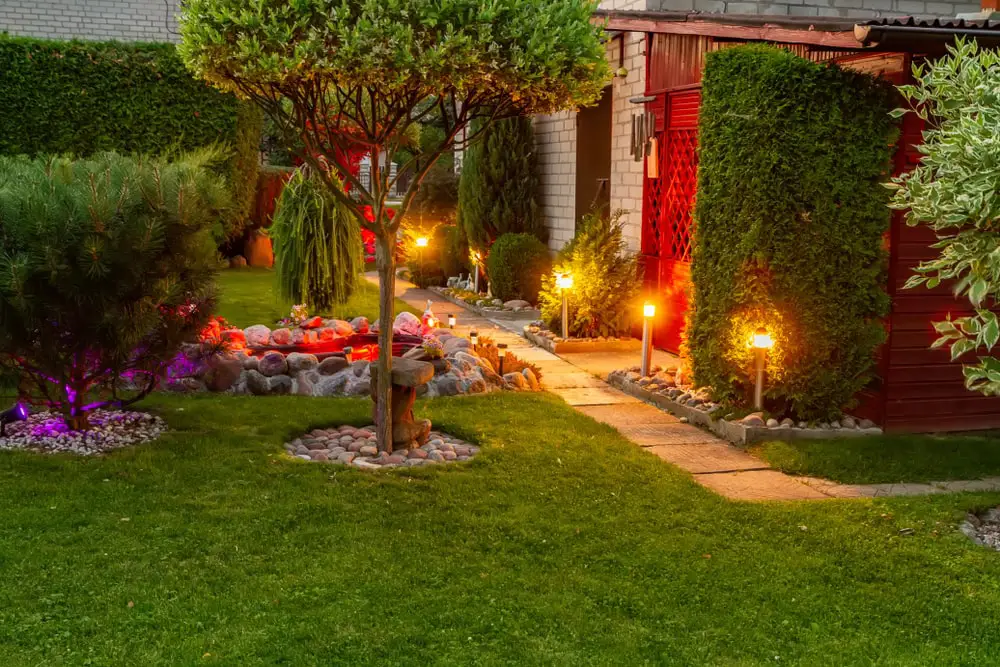Hilton Head Landscapes Fundamentals Explained
The Greatest Guide To Hilton Head Landscapes
Table of ContentsHilton Head Landscapes Can Be Fun For AnyoneThe 9-Second Trick For Hilton Head LandscapesThe Ultimate Guide To Hilton Head LandscapesSome Known Details About Hilton Head Landscapes See This Report on Hilton Head LandscapesIndicators on Hilton Head Landscapes You Should KnowThe Ultimate Guide To Hilton Head LandscapesOur Hilton Head Landscapes Diaries
Type compatibility is likewise a major component of unity in designone or 2 noticeably various kinds are excellent for comparison and emphasis, but generally all other kinds need to have some resemblances for a merged look. Texture refers to just how crude or great the surface area of the plant or hardscape product really feels and/or looks.
Instances of plants with coarse appearance include philodendrons, agaves, bromeliads, hollies, hands, and hydrangeas. Attributes that create great structure include tiny foliage; thin, strappy fallen leaves (lawns) or tall, slim stems; small, thick branches and tiny branches; long stems (vines); and tiny, delicate blossoms.
Some Known Factual Statements About Hilton Head Landscapes
A lot of plants are moderate texture, in that they can not be explained as having either crude or great texture. They are defined by medium-sized leaves with basic forms and smooth sides. The average-sized branches are not densely spaced nor commonly spaced, and the general type is typically rounded or mounding. Medium-textured plants serve as a history to link and link the crude- and fine-textured plants.

To make a room really feel smaller sized, position the coarse structures along the outer boundary and the great appearances closest to the audience. The detail of the rugged structure makes the plants show up closer and makes the area really feel smaller sized. The viewed appearance of plants can additionally transform with the range from the plant.
The Only Guide to Hilton Head Landscapes
Strong colors increase the comparison and make the structure appear coarser, while low-key colors can squash appearance. Hardscape with a rugged texturesuch as very harsh rocks and strong, large timberstends to make all plant product show up extra average textured. Designers often create a structure study (Figure 8) theoretically to assist choose the setup of plant materials.
Figure 8. Appearance research study. Shade in plant material and hardscape adds interest and range to the landscape. Shade is the most obvious element in the landscape and is generally the emphasis of most home owners; nevertheless, it is also one of the most momentary aspect, usually lasting just a few weeks a year for specific plants.
The Ultimate Guide To Hilton Head Landscapes
A basic summary of the shade wheel consists of the three primary colors of red, blue, and yellow; the three additional colors (a mix of two primaries) of eco-friendly, orange, and violet; and six tertiary colors (a mix of one nearby main and additional color), such as red-orange. Color theory discusses the relationship of colors to every other and just how they should be utilized in a structure.

Comparable (sometimes called harmonious) color design are any three to 5 colors that are nearby on the shade wheel, such as red, red-orange, orange, yellow-orange, and yellow, or blue, blue-violet, and violet (hilton head landscapers). The colors belong to each various other because they usually include two primary colors blended to form a second and two tertiary shades, which suggests they share usual residential or commercial properties
Corresponding shades are commonly discovered naturally in flowers; an usual set is yellow and violet. Shade is found in the blossoms, vegetation, bark, and fruit of plants.
The Facts About Hilton Head Landscapes Revealed
Green foliage in all its various shades is the leading color by amount, however various other shades capture focus quicker due to their high comparison to the color environment-friendly. Color is likewise located in buildings, rocks, pavers, timber, and furniture. A lot of shades in natural products, such as rock and wood, are usually muted and have a tendency to be variants of brown, tan, and pale yellow.
Color is a vital element for producing passion and variety in the landscape. Colors have residential properties that can influence feelings, spatial perception, light high quality, equilibrium, and focus. One property of color is explained about temperaturecolors appear to be cool or cozy and can affect feelings or sensations. Cool shades often tend to be relaxing and need to be utilized in areas for relaxation and serenity.
Hilton Head Landscapes for Beginners
The "temperature level" of shades can also influence the understanding of distance. Awesome shades tend to decline and are viewed as being farther away, making a space feel bigger. Cozy shades tend to advance and are perceived as being more detailed, making a space really feel smaller. Shade can also be utilized to capture interest and straight views.
As an example, intense yellow, which has the highest intensity, additionally has a high contrast with all other shades (often called a "pop" of shade) and should be conserved. A little amount of extreme color has as much visual weight as a big quantity my response of an extra subdued or weaker color.
Analogous (in some cases called unified) shade systems are any three to five colors that are nearby on the color wheel, such as red, red-orange, orange, yellow-orange, and yellow, or blue, blue-violet, and violet. The shades are relevant per other because they normally consist of 2 primaries mixed to form an additional and 2 tertiary shades, which indicates they share usual buildings.
The Basic Principles Of Hilton Head Landscapes
They tend to have high comparison in between them. One of the most typical sets are violet and yellow, red and green, and blue and orange. Complementary colors are commonly discovered naturally in blossoms; a typical pair is yellow and violet. Shade is located in the flowers, vegetation, bark, and fruit of plants.
Eco-friendly foliage in all its numerous tones is the dominant shade by quantity, yet other colors record interest quicker since of their high contrast to the shade eco-friendly - landscapers in bluffton sc - https://h1tnhdlndscps.start.page. Shade is additionally found in structures, rocks, pavers, wood, and furnishings. A lot of colors in all-natural materials, such as stone and timber, are normally muted and often tend to be variations of brownish, tan, and light yellow
The Hilton Head Landscapes Diaries
Colors have buildings that can affect emotions, spatial perception, light high quality, equilibrium, and focus. Cool shades often tend to be soothing and need to be utilized in locations for leisure and peacefulness.
Amazing colors often tend to decline and are viewed as being farther away, making a space really feel bigger. Color can also be made use of to record attention and straight sights - https://stevenagonzales5.wixsite.com/h1tnhdlndscps/post/transform-your-outdoor-space-with-hilton-head-landscapes.
For example, bright yellow, which has the highest possible strength, likewise has a high contrast with all various other colors (frequently called a "pop" of shade) and need to be utilized sparingly. A tiny quantity of extreme color has as much aesthetic weight as a big quantity of a much more controlled or weak color.